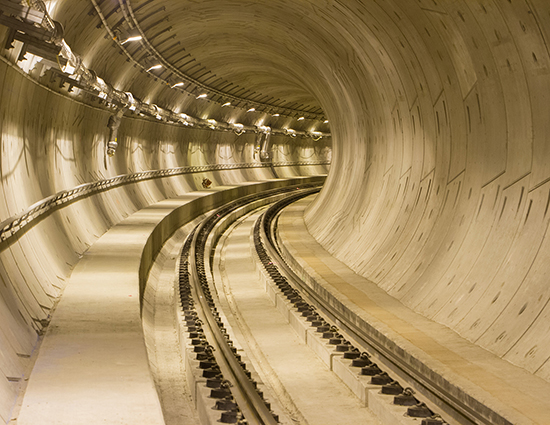|
Subscribe / Renew |
|
|
Contact Us |
|
| ► Subscribe to our Free Weekly Newsletter | |
| home | Welcome, sign in or click here to subscribe. | login |
Architecture & Engineering
| |
 |
January 23, 2017
National finalist: Gold award
Transportation
McMillen Jacobs Associates

Project: University Link extension
Client: Sound Transit
While Bertha, the state Route 99 tunneling machine, garners media coverage for all its milestones, relatively few people are aware of the intensive engineering and construction that took place to complete the University Link extension.
McMillen Jacobs Associates (MJA) was tapped by Sound Transit to serve as managing partner of the Northlink Transit Partners Joint Venture, responsible for project management of the University Link extension tunnel design, station initial and final structural design, and geotechnical engineering.
The University Link extension, part of a 1996 voter-approved mass transit system plan, connects the state’s three largest urban centers — downtown Seattle, Capitol Hill and the University of Washington — over 3.15 underground miles. This critical light-rail connecting project required MJA and its team to think outside the box to tackle the challenges.
For instance, the tunnel alignment travels east from downtown, crosses under the nine-lane, two-story Interstate 5 to reach the Capitol Hill Station, then continues north under the Montlake Cut to reach the University of Washington. The twin-bored tunnels pass beneath existing facilities and traffic at particular locations with less than one tunnel diameter — about 13 feet — of ground cover.
At the same time, to clear a path for the tunneling machine, the team had to remove a number of below-grade portions of existing cylinder pile retaining walls along I-5, an extremely risky proposition. To mitigate risk of movement and maintain ground stability, the team designed the passageway using four large-piled and top-down constructed concrete boxes for support and access. This effort resulted in less than an inch movement of the retaining walls and less than a quarter of an inch movement in the roadway pavement.
The construction of the Capitol Hill station required extensive street utility coordination along with the complex siting and coordination of three separate station access points.
The University of Washington station platform is about 60 feet below groundwater level, requiring the station walls and base slab to be designed to resist full groundwater and soil pressures as well as the uplift pressures. A cost-saving top-down construction method used in the UW station involved constructing floors as the excavation proceeded so that they could also serve as bracing for the walls during construction.
Another component of the project was construction of the 427-foot-long Montlake Triangle pedestrian bridge that connects the University of Washington campus with Husky Stadium and the popular Burke-Gilman Trail. The bridge is one of the first U.S. applications of highly curved post-tensioned concrete in lieu of steel. The safety impacts of this pedestrian bridge are expected to increase by 2030 when more than 25,000 people will cross it every day.
The University Link extension increases mobility for residents but also reduces the city’s reliance on cars in this corridor, providing a relatively low-impact form of transportation that integrates well with other forms of public transit, including buses, streetcars and ferries.
Construction of the University Link extension was completed approximately six months early and about $200 million under budget.
Other Stories:
- National finalist: Platinum award
Environmental design
Magnusson Klemencic Associates - Best in state: Gold award
Complexity
Wood Harbinger - Best in state: Gold award
Complexity
BergerABAM - Best in state: Gold award
Social, economic and sustainable design
Landau Associates - Best in state: Gold award
Future value to engineering profession
DLR Group - Best in state: Gold award
Unique or innovative applications
Otak - National finalist: Gold award
Water resources
Shannon & Wilson - National finalist: Gold award
Waste and stormwater
Brown and Caldwell - National finalist: Gold award
Structural systems
HDR Engineering - National finalist: Gold award
Structural systems
COWI North America - National finalist: Gold award
Studies, research and consulting
WSP Parsons Brinckerhoff/EnviroIssues - Best in state: Gold award
Successful fulfillment of client/owner needs
Welch Comer Engineers


